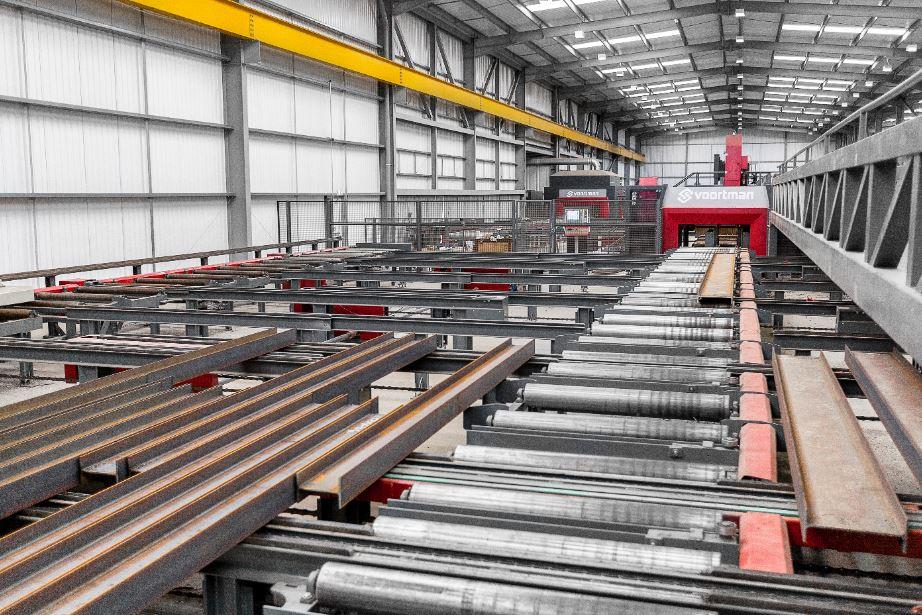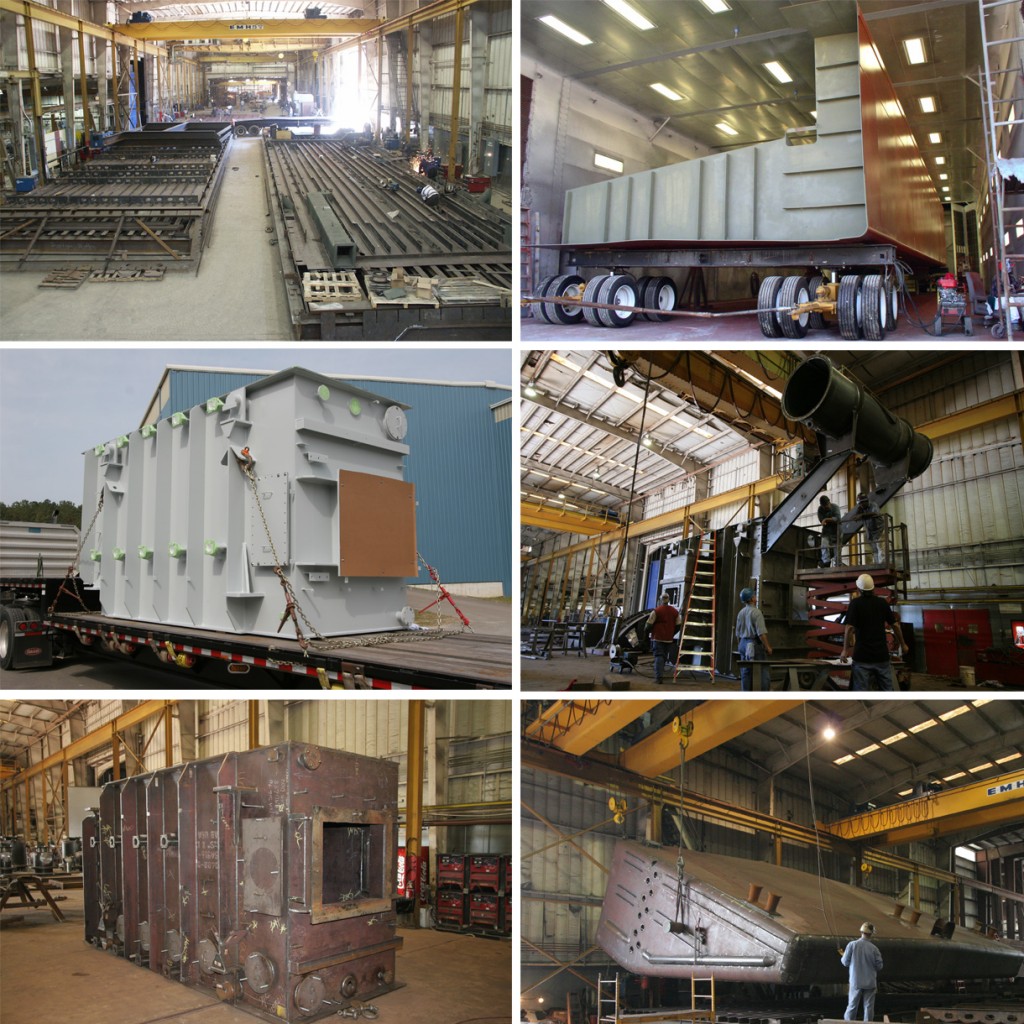Ideal Steel Fabricators Melbourne: Changing Concepts right into Truth
Ideal Steel Fabricators Melbourne: Changing Concepts right into Truth
Blog Article
Comprehensive Analysis of Cutting-Edge Techniques in Steel Fabrication Industry
As the steel fabrication market continues to advance, the assimilation of advanced methods has ended up being vital for remaining affordable and fulfilling the needs of contemporary manufacturing standards. In this vibrant industry where technology plays an essential function, recognizing the subtleties of these cutting-edge techniques is not just an alternative however a need for those looking to build in advance in the ever-evolving world of steel manufacture.
Laser Reducing Innovations
In the world of steel construction, laser reducing innovations have reinvented the precision and effectiveness of metal shaping processes. By taking advantage of the power of focused laser light beams, makers can now attain unparalleled levels of precision when puncturing numerous sorts of metals. This technology makes it possible for intricate styles to be executed with very little product wastage, making it a cost-efficient remedy for sectors requiring high accuracy elements.
Among the key advantages of laser cutting is its ability to handle a broad range of products, consisting of stainless-steel, aluminum, and carbon steel, easily. The procedure generates clean, burr-free sides, eliminating the requirement for additional finishing actions. The non-contact nature of laser cutting lowers the threat of product contamination, resulting in higher quality end items.
Moreover, laser reducing devices can be set to make swift, specific cuts, significantly decreasing manufacturing time compared to typical cutting approaches. This speed and precision make laser reducing particularly ideal for mass manufacturing environments where effectiveness is critical. As technology proceeds to advancement, laser cutting is poised to play a progressively essential function in the steel fabrication sector.

CNC Machining Innovations
The evolution of CNC machining innovations has introduced a new era of precision and performance in the steel fabrication industry. Computer Numerical Control (CNC) equipments have actually transformed steel fabrication by supplying exceptional accuracy and repeatability in the production process. Alpha reo. One of the crucial developments in CNC machining is the integration of advanced software systems that enable real-time surveillance and adjustments, leading to boosted performance and quality assurance
Furthermore, the development of multi-axis CNC makers has actually permitted for the manufacture of complicated steel components with complex layouts that were formerly challenging to generate. These machines can perform a wide variety of machining procedures, including milling, exploration, transforming, and grinding, all with high levels of accuracy.
Additionally, the consolidation of automation and robotics in CNC machining has streamlined manufacturing processes, lowered preparations, and reduced the margin of error. This integration of innovative innovations not only improves efficiency but also ensures consistent high quality across all made steel parts. To conclude, CNC machining innovations proceed to drive developments in the steel fabrication sector, setting new standards for precision and performance.
Automated Welding Technologies
Automated welding innovations have changed the steel construction industry, improving effectiveness and precision in the welding procedure. These advanced modern technologies use computer-controlled systems to automate the welding procedure, causing higher efficiency degrees and enhanced weld quality. One of the vital benefits of automated welding is the ability to execute complex welds Home Page with regular accuracy, reducing the probability of mistakes and remodel.
Robot welding systems are at the leading edge of automated welding modern technologies, providing unparalleled speed and precision. These systems can take care of a vast array of welding jobs, from easy to complex, easily (steel fabricators melbourne). By using advanced sensors and software application, robot welders can adjust to variations in material and joint geometry, making sure an attire and reliable weld
Furthermore, automated welding innovations enhance office safety by reducing the exposure of human welders to harmful fumes and extreme warmth. As the steel manufacture sector remains to evolve, incorporating automated welding innovations will be necessary for firms aiming to remain affordable and fulfill the growing demands for premium welded products.
Robotics Combination in Construction
Using robotic systems in fabrication processes has Read Full Article become a pivotal strategy for enhancing efficiency and accuracy in contemporary production atmospheres. Robotics combination in steel fabrication supplies a myriad of benefits, including increased productivity, boosted top quality control, and boosted security procedures. These innovative robot systems are equipped with innovative sensing units and programs capabilities, permitting them to execute complex tasks with a high degree of accuracy and repeatability.
One of the vital benefits of robotics integration in steel fabrication is the capacity to automate repeated tasks, such as product handling, cutting, welding, and setting up procedures. This not only quickens manufacturing cycles but additionally minimizes the risk of human mistake, causing higher general product top quality. Furthermore, robotics can operate 24/7, significantly enhancing production result and meeting limited project target dates.

3D Printing in Steel Production
Having actually revolutionized the steel fabrication industry with robotics combination, the expanding expedition of 3D printing in steel production is poised to additional advancement the world of modern production methods. 3D printing, likewise recognized as additive production, supplies unprecedented design flexibility and complexity, allowing the production of detailed steel frameworks that were previously unattainable through standard production approaches. By utilizing computer-aided design (CAD) software, manufacturers can precisely control the layer-by-layer deposition of steel material, resulting in parts with enhanced geometries and capabilities.
Among the crucial benefits of 3D printing in steel production is its capability to decrease material waste considerably. Unlike subtractive manufacturing procedures where excess material is cut away, 3D printing only utilizes the required amount of steel needed for the last component. This effectiveness not only leads to cost savings but additionally straightens with lasting manufacturing practices by minimizing ecological effect.
Furthermore, 3D printing enables fast prototyping and personalization, permitting the production of tiny batches of complex steel parts with short lead times. As the modern technology remains to grow and become more obtainable, its combination into mainstream steel manufacture processes is anticipated to drive advancement and efficiency throughout the market.
Verdict
In conclusion, the steel fabrication market has seen considerable improvements in strategies such helpful resources as laser cutting, CNC machining, automated welding, robotics assimilation, and 3D printing. These cutting-edge technologies have transformed the way steel products are manufactured, resulting in enhanced cost-effectiveness, accuracy, and performance. Continued investment in these innovative techniques is essential for the industry to stay competitive and fulfill the needs of contemporary manufacturing processes.
As the steel manufacture sector continues to develop, the integration of cutting-edge techniques has actually ended up being vital for staying competitive and fulfilling the demands of modern production requirements.One of the essential advantages of laser cutting is its capability to manage a large range of products, including stainless steel, aluminum, and carbon steel, with convenience.Automated welding innovations have changed the steel construction industry, boosting efficiency and accuracy in the welding process.Having actually reinvented the steel fabrication sector through robotics assimilation, the growing expedition of 3D printing in steel manufacturing is positioned to more development the realm of contemporary manufacturing methods.In conclusion, the steel construction industry has seen substantial improvements in strategies such as laser cutting, CNC machining, automated welding, robotics assimilation, and 3D printing.
Report this page